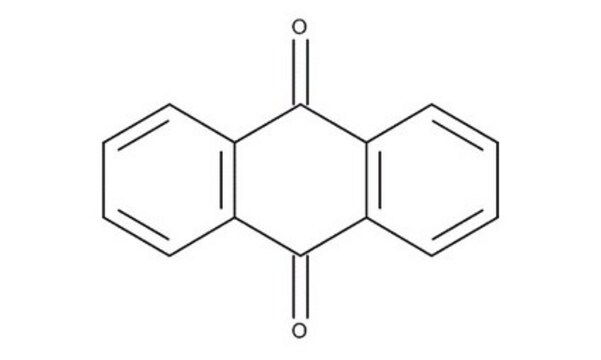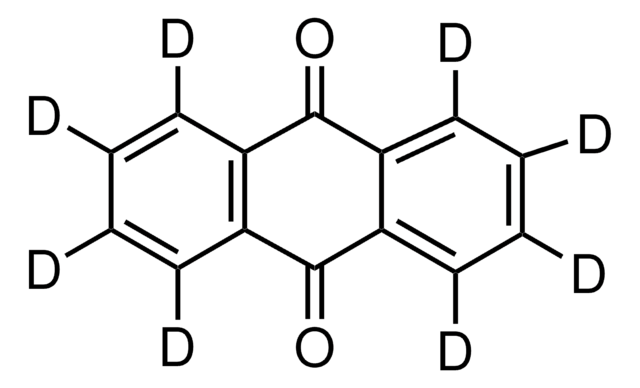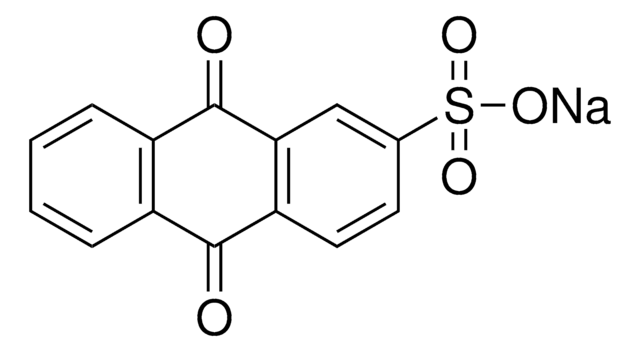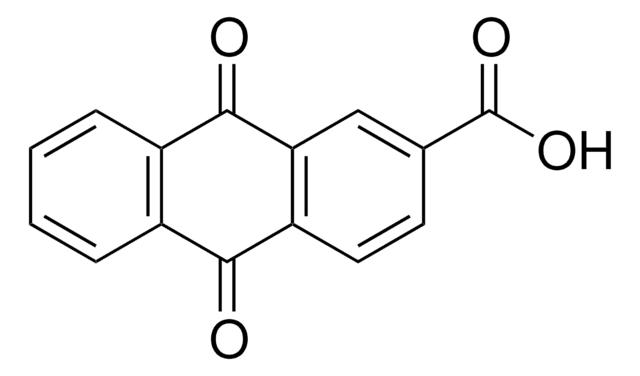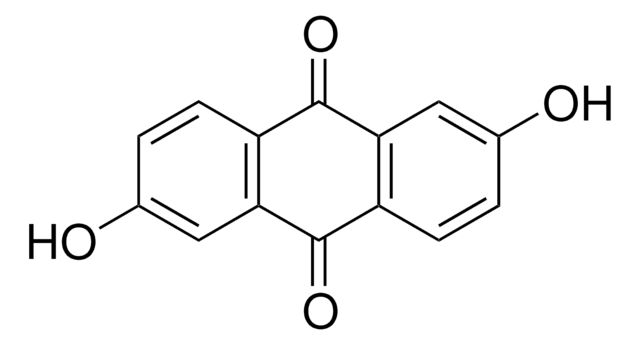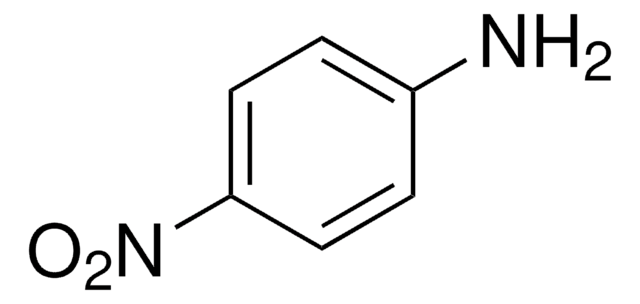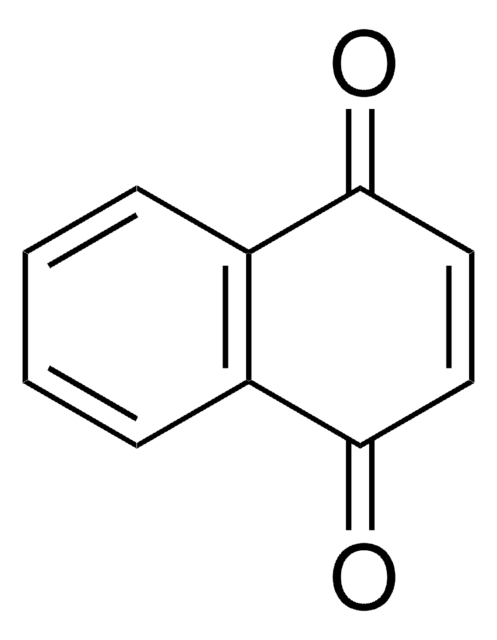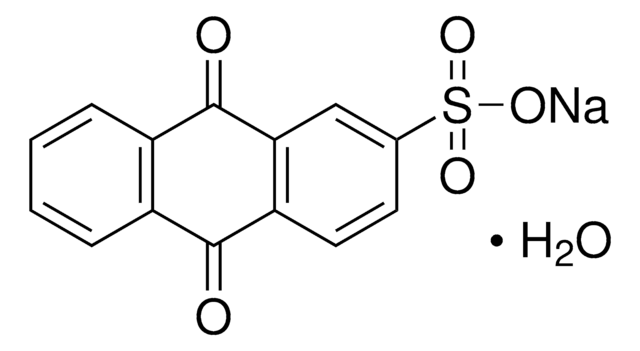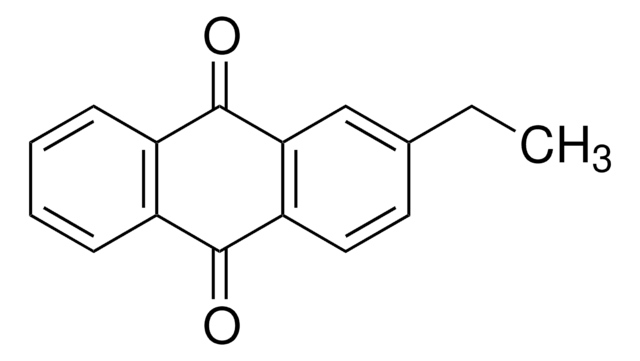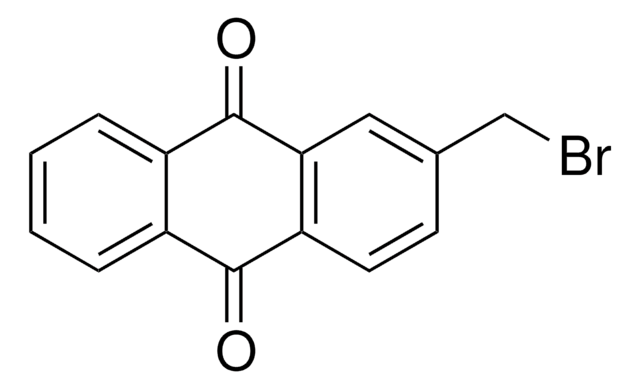Wichtige Dokumente
A90004
Anthrachinon
97%
Synonym(e):
1,4,11,12-Tetrahydro-9,10-anthraquinone, 9,10-Anthraquinone, Anthracene-9,10-quinone, Anthradione
About This Item
Empfohlene Produkte
Dampfdichte
7.16 (vs air)
Qualitätsniveau
Dampfdruck
1 mmHg ( 190 °C)
Assay
97%
Form
powder
bp
379-381 °C (lit.)
mp (Schmelzpunkt)
284-286 °C (lit.)
SMILES String
O=C1c2ccccc2C(=O)c3ccccc13
InChI
1S/C14H8O2/c15-13-9-5-1-2-6-10(9)14(16)12-8-4-3-7-11(12)13/h1-8H
InChIKey
RZVHIXYEVGDQDX-UHFFFAOYSA-N
Suchen Sie nach ähnlichen Produkten? Aufrufen Leitfaden zum Produktvergleich
Verwandte Kategorien
Anwendung
- In the synthesis of water-soluble anthraquinone derivatives such as 9,10-anthraquinone-2,6-disulfonic acid, disodium salt (AQ-2,6) and 9,10-anthraquinone-2-sulfonic acid, monosodium salt (AQ-2). These AQ derivatives are useful as redox catalysts for aeration in Becher process.
- As an indicator to determine the acid strength of poly(4-vinylpyridinium) hydrogen sulfate (P(4-VPH)HSO4) catalyst.
- As a pulping catalyst.
Signalwort
Danger
H-Sätze
Gefahreneinstufungen
Carc. 1B - Skin Sens. 1
Lagerklassenschlüssel
6.1C - Combustible acute toxic Cat.3 / toxic compounds or compounds which causing chronic effects
WGK
WGK 1
Flammpunkt (°F)
482.0 °F - closed cup
Flammpunkt (°C)
250 °C - closed cup
Persönliche Schutzausrüstung
dust mask type N95 (US), Eyeshields, Faceshields, Gloves
Hier finden Sie alle aktuellen Versionen:
Besitzen Sie dieses Produkt bereits?
In der Dokumentenbibliothek finden Sie die Dokumentation zu den Produkten, die Sie kürzlich erworben haben.
Kunden haben sich ebenfalls angesehen
Unser Team von Wissenschaftlern verfügt über Erfahrung in allen Forschungsbereichen einschließlich Life Science, Materialwissenschaften, chemischer Synthese, Chromatographie, Analytik und vielen mehr..
Setzen Sie sich mit dem technischen Dienst in Verbindung.